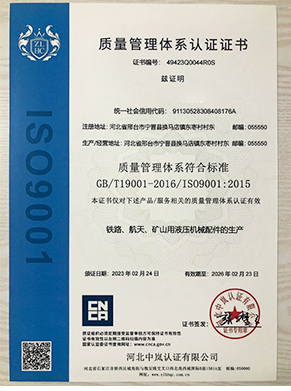- Arabic
- French
- Russian
- Spanish
- Portuguese
- Turkish
- Armenian
- English
- Albanian
- Amharic
- Azerbaijani
- Basque
- Belarusian
- Bengali
- Bosnian
- Bulgarian
- Catalan
- Cebuano
- Corsican
- Croatian
- Czech
- Danish
- Dutch
- Afrikaans
- Esperanto
- Estonian
- Finnish
- Frisian
- Galician
- Georgian
- German
- Greek
- Gujarati
- Haitian Creole
- hausa
- hawaiian
- Hebrew
- Hindi
- Miao
- Hungarian
- Icelandic
- igbo
- Indonesian
- irish
- Italian
- Japanese
- Javanese
- Kannada
- kazakh
- Khmer
- Rwandese
- Korean
- Kurdish
- Kyrgyz
- Lao
- Latin
- Latvian
- Lithuanian
- Luxembourgish
- Macedonian
- Malgashi
- Malay
- Malayalam
- Maltese
- Maori
- Marathi
- Mongolian
- Myanmar
- Nepali
- Norwegian
- Norwegian
- Occitan
- Pashto
- Persian
- Polish
- Punjabi
- Romanian
- Samoan
- Scottish Gaelic
- Serbian
- Sesotho
- Shona
- Sindhi
- Sinhala
- Slovak
- Slovenian
- Somali
- Sundanese
- Swahili
- Swedish
- Tagalog
- Tajik
- Tamil
- Tatar
- Telugu
- Thai
- Turkmen
- Ukrainian
- Urdu
- Uighur
- Uzbek
- Vietnamese
- Welsh
- Bantu
- Yiddish
- Yoruba
- Zulu
Jul . 27, 2024 03:34 Back to list
Exploring the Expenses and Factors Influencing Engine Drive Belt Pricing and Replacement Costs
Understanding Engine Drive Belt Costs
The engine drive belt, often referred to as the serpentine belt, plays a crucial role in the efficient operation of vehicles. It drives various components such as the alternator, power steering pump, water pump, and air conditioning compressor. Given its significance, understanding the costs associated with engine drive belts is important for both vehicle owners and mechanics.
The Importance of Engine Drive Belts
Before delving into costs, it is essential to appreciate why engine drive belts matter. A functional belt ensures that your vehicle's accessories operate correctly. Over time, however, drive belts can wear out due to constant exposure to heat, friction, and environmental elements. If a drive belt fails, it can lead to significant engine damage or a breakdown, making timely replacement essential.
Factors Influencing Drive Belt Costs
Several factors influence the cost of engine drive belts
. Here are the most significant1. Type of Belt There are two main types of drive belts serpentine belts and V-belts. Serpentine belts are more common in modern vehicles and tend to be more expensive. V-belts are often cheaper but less efficient, leading to a broader array of prices based on the vehicle’s design and age.
2. Vehicle Make and Model The make and model of a vehicle can significantly affect drive belt costs. Luxury and high-performance vehicles often use specialized components, leading to higher prices. Conversely, more common vehicles may have readily available belts at lower costs.
engine drive belt cost

3. Quality Like most automotive parts, drive belts come in various quality levels. OEM (Original Equipment Manufacturer) belts are typically pricier but offer superior reliability. Aftermarket belts can be less expensive, but their durability may vary.
4. Labor Costs The cost of labor can also influence the overall expense of replacing a drive belt. Mechanics may charge differently based on the complexity of the job. For instance, some vehicles require more disassembly to access the belt, increasing the labor time and cost.
Typical Cost Estimates
On average, the cost of an engine drive belt ranges from $25 to $100 for the belt itself. However, for luxury or specialized vehicles, this cost can rise significantly. When factoring in labor, the total cost for replacing a drive belt can range from $100 to $300, depending on the factors mentioned above. Regular maintenance and inspections can help identify wear and tear early, potentially reducing these costs by preventing sudden failures.
DIY Considerations
For the more mechanically inclined, replacing an engine drive belt can be a do-it-yourself (DIY) job. With the right tools and a good repair manual, individuals can save on labor costs. However, it's essential to accurately assess one’s skills and comfort level, as improper installation can lead to further complications and expenses.
Conclusion
In summary, engine drive belt costs can vary widely based on several factors, including the type of vehicle, the belt's quality, and labor expenses. Understanding these elements can help vehicle owners make informed decisions about maintenance and repairs. Regular inspection and timely replacements can ensure that the engine drive belt continues to operate efficiently, ultimately contributing to the overall performance and longevity of a vehicle. Whether opting for replacement through a professional or tackling the job oneself, recognizing the importance of the engine drive belt is crucial for any vehicle owner.
-
Korean Auto Parts Timing Belt 24312-37500 For Hyundai/Kia
NewsMar.07,2025
-
7PK2300 90916-T2024 RIBBED BELT POLY V BELT PK BELT
NewsMar.07,2025
-
Chinese Auto Belt Factory 310-2M-22 For BMW/Mercedes-Benz
NewsMar.07,2025
-
Chinese Auto Belt Factory 310-2M-22 For BMW/Mercedes-Benz
NewsMar.07,2025
-
90916-02660 PK Belt 6PK1680 For Toyota
NewsMar.07,2025
-
drive belt serpentine belt
NewsMar.07,2025

